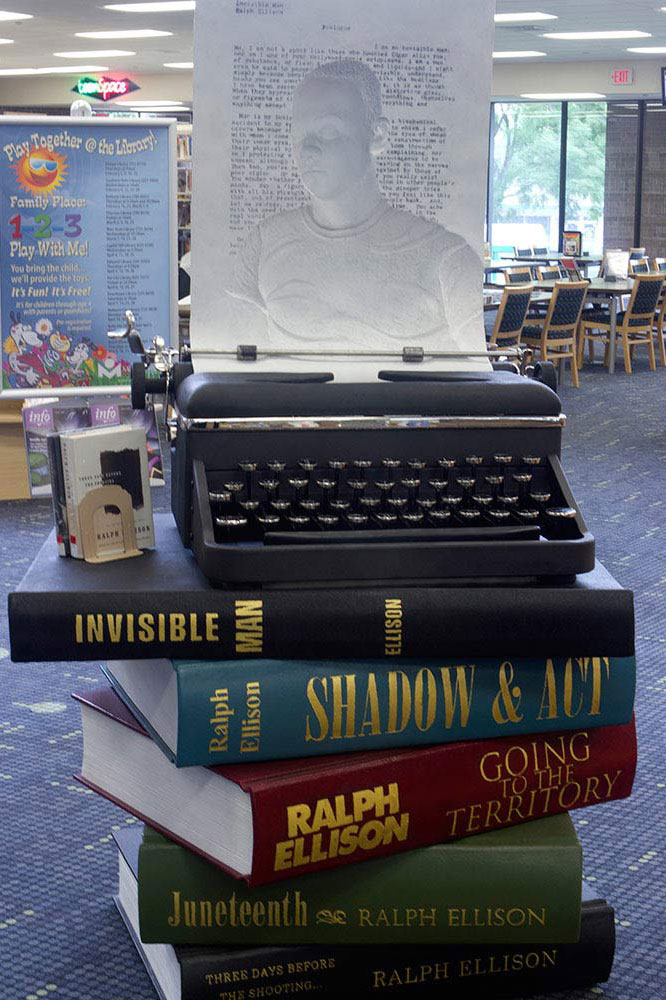David Phelps is an internationally collected sculptor exploring the deep connections between humanity and the notion of place and landscape.

My goal for this tribute to writer and library namesake Ralph Ellison is to be visually exciting, emotionally engaging, and historically educational.
Artists Christie Owens Hackler and Sue Moss Sullivan both let me know about the Ralph Ellison Library Art Project. Most of the public art projects that I come across aren’t a good fit and I don’t pursue them, but as I began to understand the Ellison Project I felt I could do it justice.


During the 1980’s I created exhibits for the science museum Omniplex. Reverse Masks was an exhibit that demonstrated how a concave, negative 3-D face creates the illusion of a positive, convex face that seems to follow the viewer’s movements. I was pleased with Reverse Masks and tucked the idea away in the back of my mind for later use. 25 years later it re-emerged in my artwork.
Through the mid 2000’s, my artwork had been primarily figurative bronze sculptures. My reaction to losing my tools during a studio break-in was to build big, heavy steel vaults that also doubled as tornado shelters. Surprisingly, once finished with this cathartic fabrication project, I loved the way they looked. That visceral reaction to the tool vaults led me to begin combining fabricated steel elements with my figurative bronze elements. Royal is a sculpture in which I combined a large scale fabricated steel typewriter with a bronze self portrait. Royal explores issues of portraiture, resumes, truth, and bringing memories to life.
My approach to the Ralph Ellison Project evolved from this personal history.
The sculpture represents a young likeness of Ralph Ellison emerging lifelike from the first page of his novel Invisible Man. The page is emerging from a Royal model typewriter that Ellison wrote with. I chose a young Ellison because it was in his youth that he had the strongest connection to Oklahoma City.
The page with Ellison’s likeness is made of bronze, the typewriter is primarily fabricated steel and the key faces are vitreous china. The typewriter rests atop a stack of giant Ellison books and also serves as a shelf for actual Ellison library books which can be checked out. Floating above the sculpture are two giant pages as if having floated up out of the typewriter. One page is a brief biography of Ellison; the other is a list of Jim Crow Laws from both Oklahoma and Alabama that would have impacted his life. The image of Ellison appears to turn and follow the viewer’s movements.

